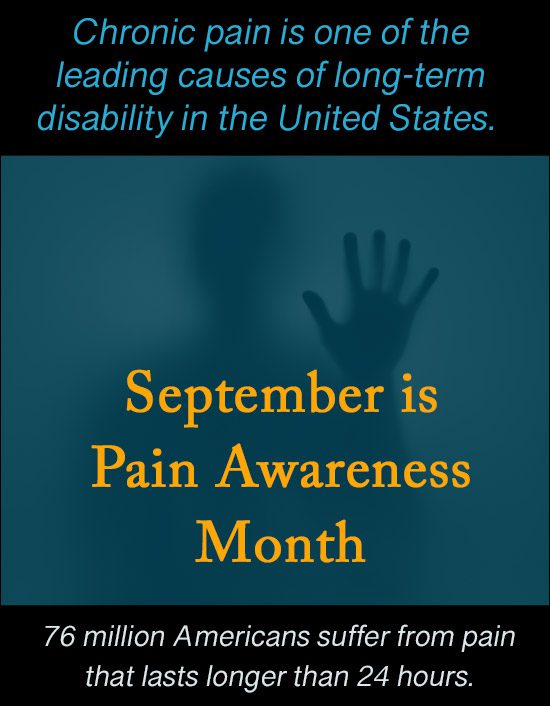Chronic pain is one of the leading causes of long-term disability in the United States.
According to the National Center for Health Statistics, more than 76 million Americans, about one in four people, suffer from pain that lasts longer than 24 hours, and millions more deal with acute pain.
The month of September, Pain Awareness Month, is set aside to raise awareness, educate people and provide resources for those battling the overwhelming toll that living with pain exacts.
“Pain is a more terrible lord of mankind than even death,” Dr. Albert Schweitzer, the famous French physician, said in 1931.
To Dr. Schweitzer’s point, pain doesn’t only manifest physically. Chronic pain can lead to depression and mental health issues, such as addiction as a result of self-medicating painful symptoms with drugs and alcohol.
The Impact of Pain on Health, Wellbeing, and Quality of Life
A 2016 study, published in the Journal of Pain Research, chronicled some of the impact of chronic pain on people’s lives, jobs and families. Researchers concluded some of the following:
- Chronic pain is one of the main reasons for all doctor appointments, and the sheer volume of patients living with these challenges are associated with a direct and indirect cost on the entire health care system
- As a patient’s pain continues, there are serious consequences for their quality of life, such as diminished physical ability, loss of job and loss of an independent lifestyle
- Levels of pain intensity can create symptoms of anxiety, depression
- Many patients experience sleep disturbances, which further impairs their energy and cognitive abilities
- A person’s chronic pain also has lasting, stressful effects on members of their family trying to ease their discomfort and supplement for lost mobility and income
The Threat of Opioid Addiction From Treating Pain
One issue for patients coping with pain is the threat of addiction to opioid painkillers after long-term use. The problem has reached epidemic proportions and in recent years, doctors have refused to prescribe effective amounts of opioids to manage a patient’s pain for fear that they may become addicted.
In response to the national opioid crisis, the Centers for Disease Control and Prevention (CDC) released a set of guidelines for prescribing opioid painkillers.
Some critics, however, believe physicians are treating these recommendations as law and patients are suffering as a result.
“Pain patients who have relied on these drugs for years are now left with little to no pain management options,” a consulting firm hired by the CDC reported last year. “Chronic pain is already stigmatized. Now, chronic pain patients face the stigma of addiction, even when they are using opioids responsibly for pain management.”
Though dependency and addiction are a serious threat when using opioids, especially when used in a way not prescribed by a doctor, the associated shame and guilt is often what prevents people from seeking help.
Addiction is not a weakness or moral failing, though. It is a chronic, relapsing disease, much like diabetes and some cancers, and is treatable. Opiate addiction treatment is especially important today, although many people in need never receive access to proper treatment and the problem goes unchecked.
Pain Awareness
This month, take the opportunity to visit the American Chronic Pain Association’s website to learn more about pain awareness month.
The website provides resources, communication tools, answers to frequently asked questions, and much more useful information.
A greater understanding of chronic pain and its consequences goes a long way toward changing society’s approach to these unnecessarily stigmatized issues.
Related:
10 Ways to Treat Pain Without Opioids or Prescription Painkillers
CVS Health to Limit Painkillers in Response to National Opioid Crisis
Polypharmacy – Why are Physicians Prescribing Too Many Drugs to Senior Citizens?






